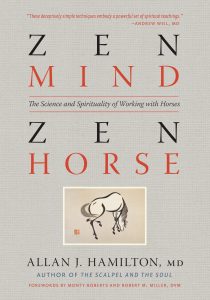
Breed Facts
Status:
Critical
Use:
Riding, Driving
Adult Weight:
900-1000 lbs.
Adult Height:
14-16 hands
Temperament:
Alert
Experience Level:
Novice-Intermediate
Notes:
Versatile; strong; well-balanced; generally black or bay; good family horse
CANADIAN
The Canadian horse was developed from equines sent by King Louis XIV from France to Quebec between 1665 and 1670. The limited number of horses in the colony made them highly valued, and geographical isolation meant that these animals remained pure.
Over the next century, natural and human selection molded a rugged and versatile breed that is strong, dashing, and quick. Canadian horses could excel at any task – they were used for farm work, transportation, riding, and racing, and earned the nickname “little iron horse.”
By 1800, the breed had become well known in the US. Canadian horses were used on stagecoach routes throughout New England. They were also used to improve other breeds, and played a pivotal role in the formation of the Morgan, American Saddlebred, and Standardbred. Though Canadian horses were celebrated for what they could do, no breed association was ever established in the US, and there was no documented effort to maintain a purebred population in the country.
The market for Canadian horses was strong throughout the 1800s and thousands of horses were exported from Canada to the US. Many of them became cavalry horses and were killed in the Civil War. So many horses were exported or lost that by 1880, the breed was nearly extinct in Canada.
In 1886, a small group of breeders in Quebec formed a studbook for the Canadian horse. An association, the Societe des Eleveurs des Chevaux Canadiens, was formed in 1895. Both the federal government of Canada and the provincial government of Quebec periodically maintained breeding programs, but in 1976, fewer than 400 horses remained. Since then, the breed society was revitalized and is successfully promoting the Canadian as a family horse and national treasure. The breed is still found mostly in eastern Canada; it is used by several Quebec mounted police forces.
In Canada, horses that are presented for registration as a Canadian must pass a thorough test that includes evaluations of the horse’s head, neck, and shoulders, body, fore- and hindquarters, lower part of the legs and feet, skin, weight, action, and height, and finally the temperament and general appearance.
In 2002, the National Horse of Canada Act recognized the Canadian Horse as their national breed. There are an estimated 2,000 Canadian horses alive today, and the future of the breed is looking brighter than at any time in the past century.
The Canadian stands 14-16 hands (56-64″) at the withers and weighs 900-1000 lbs. Canadian horses are solid and well-muscled, with a well-arched neck set high on a long, sloping shoulder. The overall impression is one of a round, sturdy, and well-balanced horse. Canadians are primarily black or bay, with full manes and tails. They have very hard hooves and may not require shoeing.
They can live outdoors year-round if provided with some shelter. They are a healthy breed, not prone to colic or founder, and are generally long-lived. They do well on hay or grass and are considered “easy keepers.” They are energetic without being nervous, and do not spook easily. As appropriate to their heritage, they are versatile and adaptable for a variety of riding and driving disciplines, and can make a good all-around family horse.
Did you know:
The Livestock Conservancy is America’s leading organization working to save over 190 heritage breeds from extinction. We rely on the support of our members, grants, and donations from the public to raise the $1 million needed each year to maintain our conservation work with rare breeds of farm animals. Click here to learn how you can help.
You may be interested in…
Managing Breeds for a Secure Future
By Dr. Phil Sponenberg, Dr. Alison Martin, Jeannette Beranger
$34.95
Manual of Methods for Preservation of Valuable Equine Genetics
By Kindra Rader, Charles C. Love, Charlene R. Couch and Katrin Hinrichs
$19.95

Breed Facts
Status:
Critical
Use:
Riding, Driving
Adult Weight:
900 – 1000 lbs
Temperament:
Alert
Experience Level:
Novice – Intermediate
Notes:
Versatile, strong,
well balanced,
mostly black or bay
You may be interested in…
Managing Breeds for a Secure Future
By Dr. Phil Sponenberg, Dr. Alison Martin, Jeannette Beranger
$34.95
Manual of Methods for Preservation of Valuable Equine Genetics
By Kindra Rader, Charles C. Love, Charlene R. Couch and Katrin Hinrichs
$19.95






